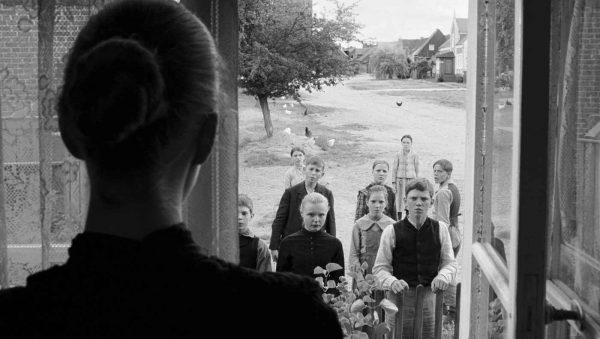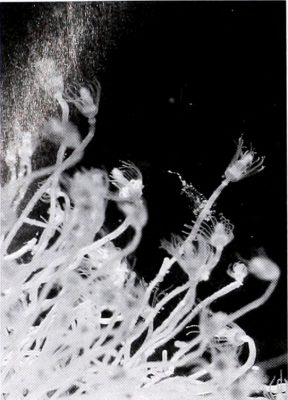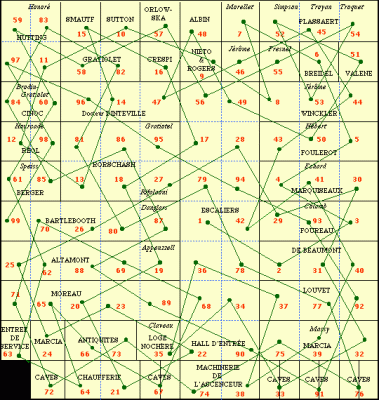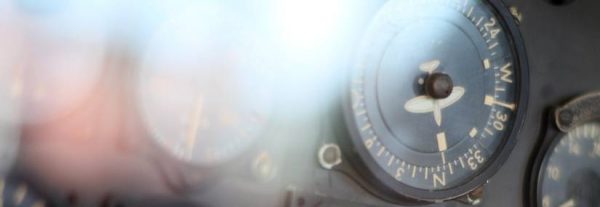‘Art is there to have a stimulating effect, if it earns its name. You have to be honest, that’s the only thing.’—Michael Haneke, in an interview
The voice, now over 70, is usually candid, bumptious; the statements – zealous, with the pang and the patina of a reproach – typically fixed at the high pitch of imperiousness. A choice remark: ‘Why do I rape the viewer? I try to rape him into being reflective, and into being intellectually independent and seeing his role in the game of manipulation.’ Or, another: ‘I look at the viewer directly, I talk to him, I wink at him. I do this again and again to show how much one can manipulate.’
More cargo, dispatched this time by critics – the voice has changed, the statements have not: ‘Haneke does want to teach us a lesson, though, to call us to task for our complicity with villains and our enjoyment of screen violence.’ And again: ‘In Haneke’s films, the viewer is implicated in the horrors that unfold on the screen; there is nowhere to run, not even after the film has stopped.’ Of course, Haneke’s arrival as one of the indisputably major directors of the last ten years has meant more than the mere mincing, or the unflinching duplication, of his words; the forty-year output, the twenty-two features, and now – counting Amour, his latest film – the two Palmes d’Or and five Academy Award nominations, have been, for many people, the achievements of a first-rate intelligence, the outcome of a defiant career of remedies levelled at the illusions, the innutritious myths of an overstretched commercial cinema.
But Haneke is the source of his own mythology, and has been at least since the appearance of The Piano Teacher twelve years ago. The severity of the face in the photographs – from top to bottom: the uncharitable brow, the admonitory cut of the eyes, a mouth in rebuke – is now a blunt habit. Physically formidable, a moviehouse mystic dressed in black, Haneke represents for many people an artist at odds with a culpable audience (his audience), and the violence and cruelty and anguish of his movies is, at least among the partisans, evidence of his salutary inheritance of Brecht and Artaud; the usual barrage of complaints levelled against him, however, include Hanekels gratuitousness, his showmanship, his undue remorselessness. (It seems that there are two ways, and two ways only, of serving Haneke: hot or cold.) Haneke requires a different approach, less gratified by the arsenal of his Big Ideas – a society jeopardised by irrepressible, mediated violence, for instance, or the unfeeling complacency of the privileged – and less prudish about the presumed perversity and coldness of his films.
On the far side of this voice and this face is a body of work for which we may still have only a very dim view, for Haneke’s contribution – and I think it merits being called a contribution, if only for the way it merits the need for being redressed – is compounded by his status as a contemporary culture hero. For ours is a period enchanted by high-yield temperaments; thus, the allure of Žižek or Bernard-Henri Lévy or David Foster Wallace, for example, is the way they transmute a few culturally venerable vocations (the Philosopher, the Writer, the Sufferer) into very stylised, very compelling (and endlessly repeatable) demonstrations of a personality. Haneke responds to a similar need. Not since Bergman has a director been treated so meritoriously for his handling of Big Themes and Important Questions, and not since Bergman has a filmmaker regarded as a card-carrier of the European art cinema been so willingly, and as lavishly, accepted by audiences in this country.
The fact of the matter is that Haneke’s reputation as a broker of monstrosity and suffering is coincident with his allure, his seriousness. But Haneke’s species of monstrosity is not like the vision of doom we get in the films of Bergman. Nor does it share the expressions of ennui, of listlessness and alienation usually attributed to Bergman’s contemporaries (think of movies by Antonioni and Resnais in the 1960s, for example), and so modishly expounded by the diagnosticians of the period (the blank stylists, the phenomenologists of boredom and mental petrifaction: Beckett, Robbe-Grillet, Sartre, Marcuse, Camus, Ionesco, Moravia, etc.). We are no longer subject to the supreme threat of Bergman’s lifetime, embellished to the point of banality: the Bomb. There are now different fears, fresher threats – no less embellished and no less banal – that supply the material: the clogging of a society by its entertainments and images (Benny’s Video, Funny Games, 71 Fragments of a Chronology of Chance), terrorism and contamination (The Time of the Wolf), a culture that either cannot console or that aggravates a life into oblivion (The Piano Teacher, The Seventh Continent, Amour), a middle class too uncomprehending (Caché, Code Unknown), memories too noxious and irrepressible (Lemmings, The White Ribbon). The new vision of despair proceeds not from fear of annihilation but from a stupefying superfluity – of having, and of getting, too much at too great a speed.[1]
***
Born in Munich in 1942, taking degrees in Philosophy, Psychology, and Drama from the University of Vienna, Haneke began work as a stage director in West Germany and Austria in the early 1970s, moving to German television in 1973, where he wrote and directed seven films before premiering his first theatrical feature, The Seventh Continent, at Cannes in 1989. This was followed, in 1992 and 1994, by Benny’s Video and 71 Fragments of a Chronology of Chance, completing what Haneke would call his Glaciation Trilogy and bringing him to the attention of audiences in the United States. By this time, Haneke’s style had been established – his taste for uninterrupted master shots, for neutral colours, for the sound of television sets and automobiles, for images realised in blue-gray-green. The typical Haneke image is a direct, rectangular presentation of interiors and exteriors (take, for instance, the young daughter in The Seventh Continent deposited at the curbside of her school; the opening and closing shots of Caché; the concluding image of The Piano Teacher; the crowded auditorium in Amour; the children’s choir in The White Ribbon). Haneke often gives his narratives in the form of discrete pieces of information: sounds are precise, actions regularly repeated to the point of redundancy. When the family prepares for – and meticulously carries out – the destruction of its home in The Seventh Continent, for instance, or when Georges and Anne (two popular designations in the repertoire of Haneke character names) cut and chew their lunches at their Paris kitchen table in Amour, we get a hyper-alert vision (and sound) of the world.
This is what I like most about these films, and it is perhaps why the first of Haneke’s features to be released theatrically remains his most interesting, and his most defensible. Haneke’s is ultimately an amphetamine imagination, a style, like Tati’s, that is very attentive to the sound and shape of surplus things. But whereas Tati’s ecstatic carnival vision is delirious, addictive, Haneke’s is a style deployed on the verge of paranoia. Common objects – a golf ball, a carton of eggs (Funny Games); a shelf stocked with food (The Seventh Continent); an unmarked videocassette (Caché) – acquire an uncommon scale, the consequence of Haneke’s overall strategy (and standard) of amplifying otherwise unremarkable gestures and sounds until doubt, cultivated by a sneaking suspicion, becomes the dominant tone. Doubt, because the crowding of a living room or a supermarket or a classroom by noises as sharp – and objects as clunky, dense – as Haneke’s means making the world more opaque, more inert, and therefore less comprehensible intellectually. (One remark from his early television film, Lemmings, is therefore characteristic: ‘Sometimes I feel like destroying everything, all the furniture. It obstructs me.’)
Like the incongruous, uncanny vision we find in Epstein, Buñuel, the Marx Brothers – and, in recent years, in films by Giorgos Lanthimos or Apichatpong Weerasethakul – the intensification of Haneke’s nimble awareness of the vernacular material of everyday life, and its potential to give off unanticipated sensations, is the oblique inheritance of surrealism. But the specific feelings given off by ‘all the furniture’ in a Haneke film are not like the feelings promised by the objets trouvés cherished by Breton, who would declare in 1934 that his flea market discoveries ‘liberate the individual from paralysing affective scruples, comfort him, and make him realise that any obstacle he may have supposed insurmountable is overcome.’ The stunted life cycle of a Haneke character is the result of being drowned out, not liberated, by the gluttonous cramming of a dead-end space.
By turning nearly every noise, every trapping of a Paris recital hall or a Vienna train station into a potential impasse, the mind is left with nothing else to do but double back on itself, to struggle for a less clotted perspective on its own situation (this is why Haneke’s characters are so often heard monitoring themselves and assessing their behaviour: ‘Why am I doing this?’ ‘What are we doing?’ ‘What’s going on?’). But this persistent, nagging self-scrutiny furnishes nothing very useful or redemptive, no cut-rate solutions. The anguished paranoid stupour of a Haneke film is the upshot of its benighted style of scepticism; the Archimedean point, the promise of a more pacifying view, is apocryphal. (Haneke’s repeated statements about refusing to give his audience any ‘answers’ or ‘explanations’ are, in effect, also desciptions of the predicament of his characters. Like his ideal viewer, the ideal Haneke character has no special insight, no reserve of omniscience. Identifying with these people ultimately means identifying with the dubiousness, and the frustration, of a dreadfully meager vantage point.)
Paranoia is the successor to an obsolescent taste for suspense. Hitchcock’s famous illustration, reported to Truffaut – ‘The bomb is underneath the table and the public knows it,’ – separate suspense from surprise by making the anticipation of a (usually disastrous) event, rather than the shock of the event itself, the main emotional achievement. But Haneke’s films are too restrictive, too unwilling to disclose the necessary amount of on-screen information to work suspensefully. The surprise of much of early cinema (Edison’s experiments, Méliès, the Lumière brothers, Porter) may be closer in spirit, although the magic-trick vision we get in Méliès’s A Trip to the Moon, for instance, or the image of Porter’s bandit aiming and firing into the camera at the end of The Great Train Robbery, is transmitted in one direction: outward, toward the audience (there are a few exceptions, of course, as when Méliès’s performers react with astonishment or fascination at something we see. Surprise, however, is generally the advantage of the audience.) Suspense, too, relies on a skewed distribution of information between characters and viewers; Hitchcock’s example is clear about this, since his hypothetical bomb exits only for the audience, which responds in any number of ways (squirming, gasping, looking away, flinching). In contrast, the paranoid imagination of the typical Haneke film works by minimising, at any given moment, an entire repertoire of potential solutions, reducing characters and viewers to a shared state of mental disrepair. His cool, anti-psychological presentation of events virtually neutralises all opportunities for suspense, diminishes nearly all chances for anything to mean much more than the dumbfounding total of its effects on the eye and ear.
***
It would probably be redeeming to suggest that Haneke’s films are not about paranoia or about the cruelties and pains and insolence of a largely bovine and ‘advanced’ society (any more than Hitchcock’s films can be said to be about suspense), but that they use the exasperated feeling of a mind or of a body struggling under extremely restricted conditions aesthetically, for the purposes of developing a style. Yet Haneke’s alleged discovery – not of an art of cruelty, as the title and subject of one recent book would have it, but of the potential value of a cruelty of art – is not a discovery at all. It is instead one of the recurring traits of a great deal of modernist experiments in the arts; the assault, the threat, the violent or destructive use of an artist’s materials may be like the experience of cruelty, and it is on these terms, in the form of a proposed attack on his audience, that Haneke’s well-known image as the ‘last modernist’ appears. His accomplishment, one critic tells us, is that, ‘like any old-style modernist’, his is the interminable pursuit of difficulty, ambiguity – that is, Haneke ‘likes to make the audience work’ (presumably the way that Bergman or Tarkovsky liked to make their audiences work. We even learn that, had he still been alive and active, Bergman would have responded to the internet ‘in the manner of Haneke’).
But the overload of objects and sounds, the strategy of submitting almost every action – a dinner table argument, a suicide, a concert, a murder – to the sharp and shipshape geometry of Haneke’s frame often has the unintended, perverse effect of being pleasurable. This is less the aggressive policy of an administrator of difficulty, or the sobered vision of an ‘old-style modernist’, than the principle of a dandy. If we can amend Baudelaire’s definition, as Camus did in The Rebel, to say that the dandy lives and dies before a mirror, we might also say (again with Camus) that ‘dandyism is a degraded form of asceticism’. The dandy’s greatest pleasure is in the most strenuous, and forceful, resolution to the perennial modern problem of an incomplete personality. In Haneke, as in Nicholas Ray, this means trying to remedy a life without qualities – to cheat the fate of a depersonalised existence – in ways that initially might seem too defeaning, repulsive. Thus, the push of Haneke’s characters against the trap of their enervating slumber usually means the pursuit of extreme techniques (think of Isabelle Huppert’s voluntary rape and self-mutilation in The Piano Teacher, or the family’s suicide in The Seventh Continent, or the ending of Amour). The goal, like that of Camus’s dandy, is to give an otherwise water-logged and denuded human life a form. By shrinking the possibiliy for knowing anything of redeeming value – Haneke’s radical scepticism is the flipside of his dandyism – the only alternative left is, or may be, extinction.
***
The lessons have been learned: the assault is now an entreaty, the reproach an object of desire. Conducting the transition from cult to culture – from Hamsun to Haneke – is the faith, nurtured as a taste, of an affluent society in the unlimited consolidation of its own fugitive feelings. Haneke’s films have the effect of a continuously aborted confrontation; the goal is an experience that is simulatenously incriminating and self-vindicating, anodyne. The thrill and the tease, the unconditionally replenished fantasy, is what counts.
When the Last Modernist wins an Oscar, or when the feral becomes a formula, the High Seriousness and Difficulty of the man in black – ‘let us remember,’ says one critic, ‘that in conversation with journalists he cites Adorno, recites Brecht, quotes Godard and alludes to Baudrillard and Jean-Louis Baudry’ – is inlaid with the middling standard of commercial respectability. An ascendant midcult that Dwight MacDonald described in 1960, with its excess of ‘built-in reactions’ and its debauched, mass-made avant-gardism, has become habitual. And yet, the history of almost every taste, and the duration of the feelings or of the ideas attached to it, is ultimately provisional, limited. At some moment, kitsch becomes the vaunted item and the vaunted item becomes kitsch. Greenberg’s general idea is still, I think, correct: ‘Capitalism in decline finds that whatever of quality it is still capable of producing becomes almost invariably a threat to its own existence. Advances in culture, no less than advances in science and industry, corrode the very society under whose aegis they are made possible.’
But the twilight culture that makes Haneke’s films possible will continue only as long as a public believes in the dim presentation of its own potential castrophes, or that there is anything of interest or artistic value to a career that endlessly fields a very limited repertoire of bargain-basement ideas. A new view is needed: the assault is impotent, the wink turns cold, the face becomes a lie.
[1] One recent example from another established filmmaker: the horror of a film like Lars von Trier’s Melancholia is not that Earth is destroyed, but that its destruction could not be forestalled, and that the techniques devised – here, in the guise of science – to monitor the potentially lethal orbit of a mysterious planet are ultimately insufficient, unreliable. Thus, the point is already established well before we learn the fate of the characters, indeed of the entire world.




